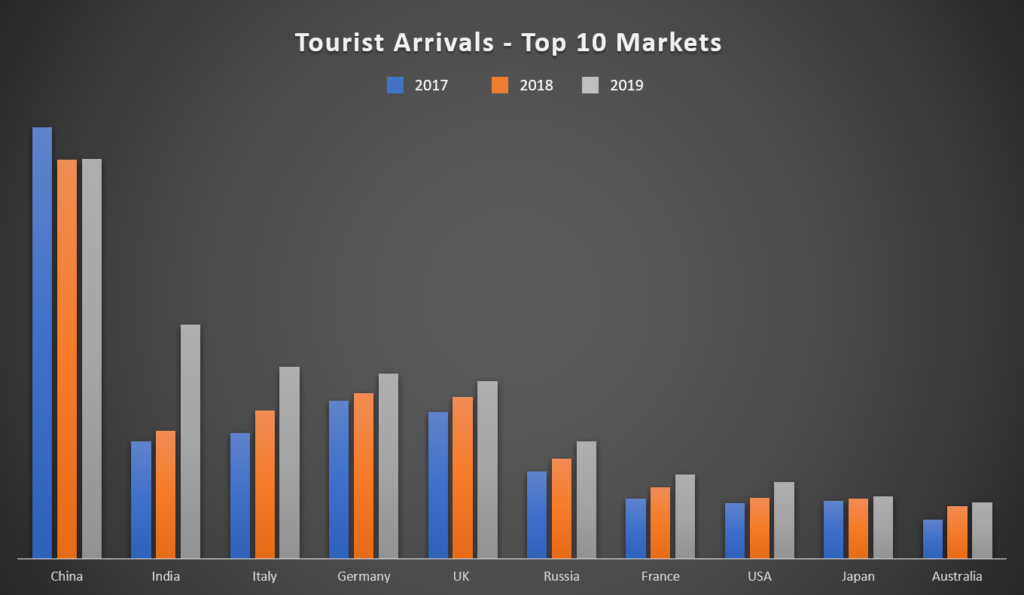
For decades, tourism’s major key indicator has been total number of tourist arrivals. With more markets, accessibility and more beds, is it time to make total bed nights as the key major indicator for Maldives tourism?
Total tourist arrivals don’t say the whole story. With new key markets like India, Middle East & China, the average stay has reduced to half of what our traditional European markets had. While this doesn’t truly represent the number of bed nights and expenditure by tourist comparative to the markets, it will be best to measure tourism success with key major indicator as bed nights rather than total tourist arrivals.


While the pandemic has brought havoc on the travel industry, the thought of travel still continues to bring out itchy feet to the travelers. Travelers look for seclusion and privacy, which a geographically scattered country like the Maldives can offer. In addition to this, travelers are also looking for longer stay on their “hideout”. This, ultimately means that with less tourist arrivals, we can achieve the target bed nights. That too even faster at a post-pandemic era like this.
The time has come for marketing and sales to be more focused on longer stays. The longer stay offers such as workation (remote working) offers should now be at forefront. While the world is still trying move forward after the hard-hit pandemic, it is time to offer longer hideouts as a sanctuary to wear the storm off.

With bed capacity of 50,000 and occupancy at 70%, the total bed nights of 12,775,000 should be made as the target. Maldives could achieve this with a smaller number of total arrivals depending on marketing and the markets.
However, the need to record tourist arrivals is not any less. But to give a better picture of where the tourism industry stands and the income generated, bed nights should be made as the key and target.
As such, there is a need to rethink the policy framework supporting tourism growth, and to shift from a growth-paradigm that values increasing visitor numbers as the primary objective to deliver a sustainable vision for the future. The desired objective is a future where tourism ‘success’, is not measured in visitor numbers alone, but rather one that focuses on the positive impacts that tourism can provide at the destination level.
The tourism sector needs to be judged not by demand but by its effectiveness in providing livelihoods, contributing to the local economy and the net benefit to the destination, community and indigenous people.













